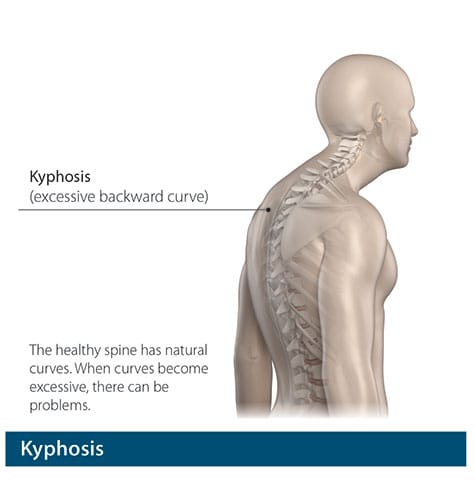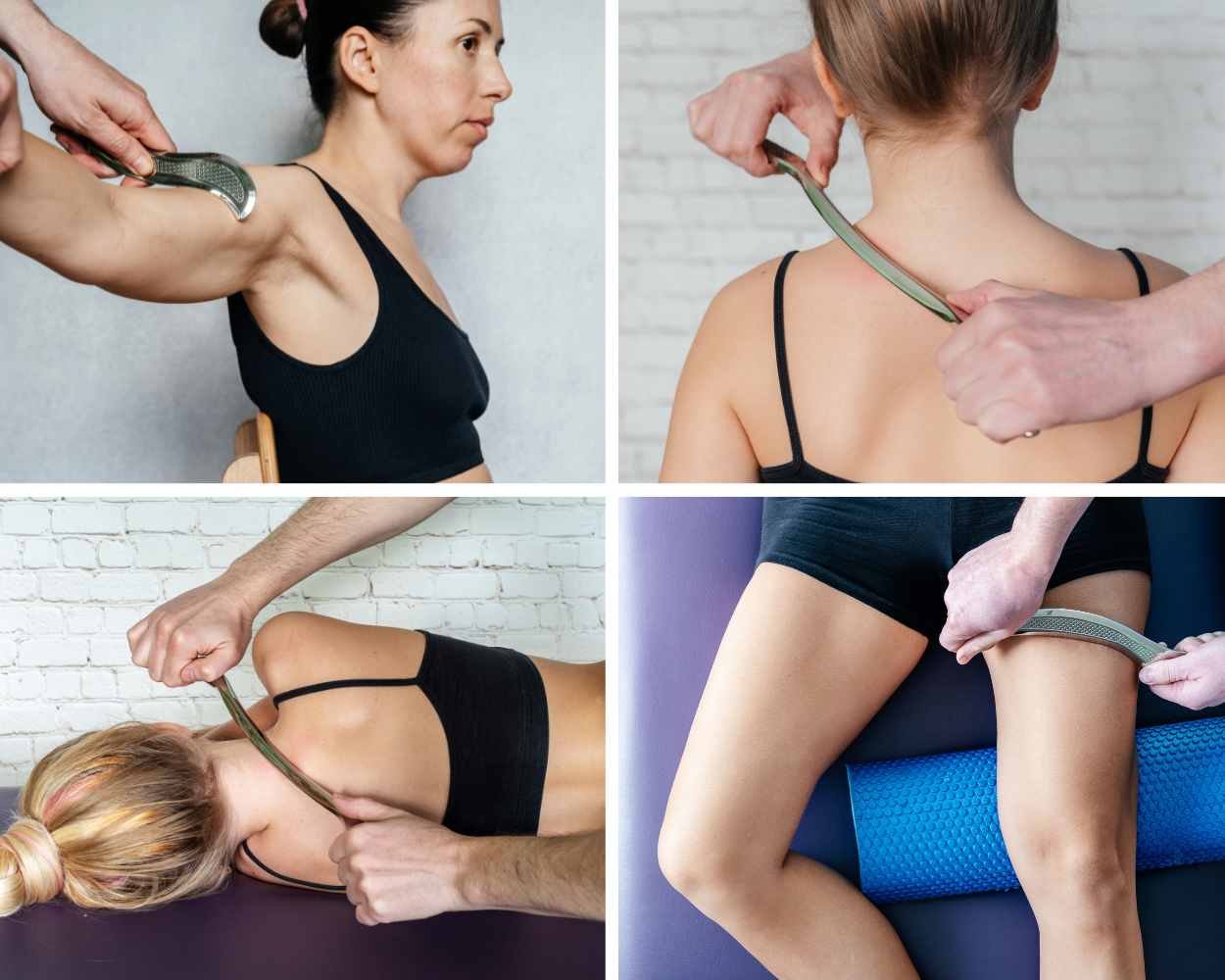Expert Kyphosis Treatment in Vadodara
Correct rounded upper back, improve posture and relieve chronic pain with specialized chiropractic care. Comprehensive treatment for postural kyphosis and structural spinal curvature.

Understanding Kyphosis
Kyphosis is an excessive forward rounding of the upper back that can affect people of all ages
What is Kyphosis?
Kyphosis refers to an exaggerated forward curvature of the thoracic spine (upper back), creating a hunched or rounded appearance. While some degree of thoracic kyphosis is normal (20-45 degrees), excessive curvature beyond 50 degrees is considered hyperkyphosis and can lead to various health issues.
Normal vs. Excessive Kyphosis:
- Normal Thoracic Curve - 20-45 degrees for optimal spinal function and shock absorption
- Mild Kyphosis - 50-60 degrees curvature, often postural and reversible
- Moderate Kyphosis - 60-75 degrees, may involve structural changes
- Severe Kyphosis - 75+ degrees, often structural and may affect organ function
Common Types of Kyphosis:
- Postural Kyphosis - Most common type, caused by poor posture and muscle imbalances
- Scheuermann's Kyphosis - Structural condition developing during adolescence
- Congenital Kyphosis - Present at birth due to spinal malformation
- Age-related/Degenerative Kyphosis - Develops in older adults due to spinal degeneration
- Nutritional Kyphosis - Caused by vitamin deficiencies affecting bone health
Early intervention is crucial for managing kyphosis effectively and preventing long-term complications.

Types of Kyphosis
Understanding different forms helps in developing targeted treatment approaches
Postural Kyphosis
Most common type, caused by poor posture habits, muscle weakness, and prolonged sitting. Often flexible and reversible with proper treatment.
Scheuermann's Kyphosis
Structural condition developing during growth spurts, characterized by wedge-shaped vertebrae. Requires specialized adolescent care.
Congenital Kyphosis
Present from birth due to spinal malformations. Requires early intervention and careful monitoring throughout growth periods.
Degenerative Kyphosis
Develops in older adults due to disc degeneration, osteoporosis, and vertebral compression fractures. Focuses on pain management and function.
Recognizing Kyphosis Symptoms
Symptoms vary based on the severity and underlying cause of the curvature
Visible Postural Changes
Rounded upper back, forward head posture, protruding shoulder blades, and apparent height loss. Often called "hunchback" or "dowager's hump."
Upper Back and Neck Pain
Chronic discomfort between shoulder blades, neck pain, and headaches due to muscle strain and altered biomechanics from the curvature.
Reduced Mobility
Difficulty standing straight, limited ability to extend the thoracic spine, and stiffness in the upper back and shoulder regions.
Breathing Difficulties
In severe cases, reduced lung capacity and shortness of breath due to compression of the chest cavity and restricted rib movement.
Understanding Muscle Imbalances in Kyphosis
Kyphosis typically involves specific patterns of muscle tightness and weakness
Tight Muscles
- Pectoralis Major/Minor - Chest muscles pulling shoulders forward
- Upper Trapezius - Elevates and rounds shoulders
- Levator Scapulae - Contributes to elevated shoulders
- Latissimus Dorsi - Can pull shoulders downward and forward
These tight muscles pull the shoulders forward and contribute to the rounded back appearance
Weak Muscles
- Rhomboids - Retract and stabilize shoulder blades
- Middle/Lower Trapezius - Pull shoulders back and down
- Deep Neck Flexors - Support proper head positioning
- Erector Spinae - Thoracic extensors for upright posture
Weak muscles fail to counterbalance the pull of tight muscles, allowing the forward curvature to progress
Successful kyphosis correction requires addressing both tight and weak muscle groups through targeted interventions
Our Kyphosis Treatment Approach
Comprehensive chiropractic care to correct spinal curvature and restore proper posture
Comprehensive Assessment

Postural Analysis
Detailed evaluation of spinal curvature from multiple angles, assessment of shoulder positioning, and identification of compensatory patterns throughout the body.

Muscle Balance Assessment
Comprehensive testing of muscle strength, flexibility, and identification of specific tight and weak muscle groups contributing to the kyphotic posture.

Spinal Mobility Evaluation
Assessment of thoracic extension capability, spinal flexibility, and identification of rigid vs. flexible kyphosis components for treatment planning.
Our Treatment Methods

Spinal Adjustments
Specific chiropractic adjustments to improve thoracic spine mobility, reduce joint restrictions, and facilitate proper curvature restoration.

Myofascial Release
Targeted soft tissue techniques to release tight chest muscles, upper trapezius, and other restricted tissues pulling the shoulders forward.

Instrument-Assisted Therapy
Advanced techniques using specialized instruments to break down fascial restrictions and scar tissue in chronically tight muscle groups.

Postural Exercise Program
Customized exercises to strengthen weak back muscles while stretching tight chest and shoulder muscles to rebalance the musculoskeletal system.

Postural Re-education
Training in proper sitting, standing, and movement patterns to reinforce correct spinal alignment and prevent recurrence of kyphotic posture.

Ergonomic Optimization
Workplace and lifestyle recommendations to support proper spinal alignment during daily activities and reduce stress on the thoracic spine.
Age-Specific Kyphosis Considerations
Treatment approaches vary significantly based on age and kyphosis type
Adolescents (10-18 years)
Common Types: Postural, Scheuermann's
Focus: Growth guidance, bracing if needed, exercise correction
Prognosis: Excellent with early intervention during growth periods
Adults (19-50 years)
Common Types: Postural, degenerative onset
Focus: Muscle rebalancing, posture correction, pain management
Prognosis: Very good with consistent rehabilitation
Seniors (50+ years)
Common Types: Degenerative, osteoporotic
Focus: Pain relief, functional improvement, fall prevention
Prognosis: Good for symptom management, structural improvement limited
Patient Success Story
Real results from our kyphosis correction program
"As a software developer who spent 12+ hours daily at the computer, I developed severe postural kyphosis over 10 years. My rounded shoulders and forward head posture caused constant neck pain, headaches, and breathing discomfort. I had tried everything from yoga to massage with limited results. At Spine-X Clinic, Dr. Chandresh identified specific muscle imbalances I wasn't aware of - extremely tight chest muscles and very weak upper back muscles. The comprehensive treatment plan included chiropractic adjustments to improve my thoracic mobility, targeted stretching for my tight muscles, and specific strengthening exercises. Within three months, my posture transformed completely. The chronic pain disappeared, and I gained 2 inches in height! My confidence improved tremendously, and I now have the knowledge to maintain proper posture for life."
- 35-year-old IT professional from Vadodara (Kyphosis Correction Success)
Home Management & Prevention Strategies
Daily practices to support kyphosis correction and prevent recurrence
Daily Stretching Routine
Regular stretching of chest, shoulders, and neck muscles to counteract forward pulling forces and maintain flexibility.
Postural Strengthening
Consistent exercises targeting rhomboids, middle/lower trapezius, and deep neck flexors to maintain proper shoulder positioning.
Workstation Ergonomics
Proper monitor height, supportive chair with lumbar support, and regular breaks to avoid prolonged forward head posture.
Sleep Positioning
Sleep on back with proper pillow support or on side with pillow between arms to maintain spinal alignment during rest.
Device Usage Awareness
Hold phones and tablets at eye level, avoid prolonged looking down, and take frequent breaks from mobile device use.
Consistent Maintenance
Regular chiropractic check-ups and continued home exercise program to maintain corrections and prevent regression.
Ready to Straighten Your Posture?
Book your comprehensive kyphosis assessment today and start your journey to better posture and pain-free living
Comprehensive Correction Approach
Integrated chiropractic care combining spinal adjustments, muscle rebalancing, and postural training to effectively address the root causes of kyphosis